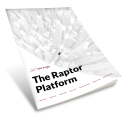
If the end game of control system development is to get your system or vehicle into production, you need to be as efficient as possible at each stage of the development life-cycle. It can be really frustrating, and costly, to get underway with a project and run into roadblocks that could have been avoided with the right tools. We’ve identified three mistakes that can create friction and ultimately slow your project to a halt.
1. Not Thinking About Hardware First
We have a saying around here: Hardware selection drives tool selection. Kevin Alley, Director of Programs at New Eagle explains:
“One of the challenges control engineers face is that when they’re in prototype development they don’t know what kind of controller hardware they’re going to need. If they choose a software platform at the front of their project that doesn’t have the right I/O for what is needed later…they’ll have to start over. That’s going to cost time and money.”
Ideally, engineers should select controller hardware first, and with this in mind: controllers are more than just a piece of hardware. As vehicles and the software that controls them becomes increasingly more complex, the software itself becomes a significantly larger part of the value-added to the vehicle.
Selecting ruggedized, high-quality hardware that supports your ideal software is now a critical choice that needs to move higher upstream in the development process. Your hardware selection impacts your schedule and your budget. But if so much of your vehicle’s value is reliant on its software, you better have the right ECU to support it.
How New Eagle Can Help:
Unless you’re working for the big guys with an ‘unlimited’ budget, it probably makes more sense to use an off-the-shelf controller with an accessible, highly flexible, and open development environment such as Raptor™. You could select one of our many ECU models available at volume pricing, and use it directly with our Raptor development toolset.
If you have an existing ECU you’d like to use, we can port Raptor into it, then you can use it to develop, test and control your vehicle, without friction. Better yet, you can start development today with one of our off-the-shelf ECUs and then easily port your Simulink model when YOUR controller comes online.
And, if you need a custom ECU, we can build you one to match your requirements, leveraging our existing relationships with high-volume automotive-grade ECU suppliers.
2. Using the Wrong Development Tools
Engineers love rapid prototyping tools because they’re fast and familiar. Many of them may even have learned the rapid prototyping development environment in school, and want to stay in their comfort zone. We get it and support it.
The key is to understand that most rapid prototyping tools are just that, useful for prototyping only. That’s where they leave you. They are too expensive and don’t have the facilities needed for production. And if you use a rapid prototyping tool that can’t get you to production, or one that you can’t afford –another point of friction is created. We would like to suggest that some rapid prototyping tools can take you to production.
Kevin explains:
“That’s really the core of why New Eagle was founded. We wanted to offer controls engineers the same development style that they were used to, but with the added benefit of being able to take it all the way to production. The challenge was making high-quality controllers for them to run on that were affordable, and we have done that with our volume pricing.”
How New Eagle Can Help:
We created Raptor-Dev so that engineers could quickly create custom software in a highly effective development environment, one that is already familiar to many.
Raptor-Dev is an open ECU development environment that lets you quickly develop in the Simulink environment and run on production embedded hardware without the friction common to embedded system development.
3. Using a Disparate Set of Tools
This arguably creates the highest volume of headaches. Mismatched tools mean manual adaptations that eat up your time, create more friction, and introduce another source of costly errors. Imagine running into roadblocks that require hand-writing new code at each of these stages:
- Design
- Development
- Calibration
- Validation
- Testing
- Service
Here’s Kevin:
“What if, at any stage of development, you ran into a problem, and you could quickly change code in minutes vs. taking a week or more to get a new version from your vendor? How about changing the function of the code in seconds using a streamlined calibration interface vs. rebuilding everything. These quick-cycle iteration capabilities over many iterations will really add up – saving you time and cost.”
How New Eagle Can Help:
The Raptor Platform™ is an end-to-end solution that allows you to work within a holistic development system that takes you through to production, quickly. Engineers can design, develop, calibrate, validate, manage and service their vehicles all within a compatible suite of tools.
Kevin explains the not-as-obvious value of the Raptor tool-chain:
“We’ve heard from our customers that one of the things they really appreciate is the fact that they can keep their IP in-house because Raptor eliminates the need to constantly submit requests for software changes to an outside vendor – instead they can just do it on their own. When we say ‘Take Control’ here at New Eagle, that’s what we’re talking about. Helping engineers take control of their project from start to finish.”
If you’re interested in getting started with Raptor, consider our Raptor Starter Kit. It includes Raptor-Dev, Raptor-Cal & Raptor-CAN.
You can also read more about each of the tools in the tool-chain in our eBook about the Raptor Platform.





